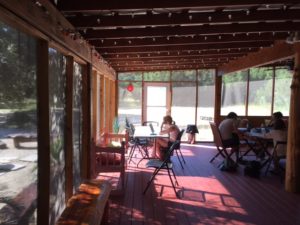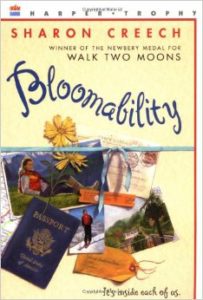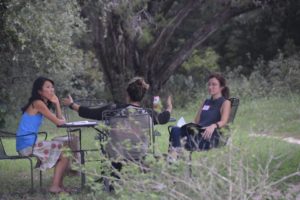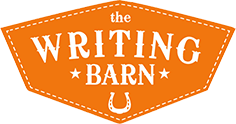Applying the Childhood Development of Middle Graders to Your Work-in-Progress
#WBReflects by Rebekah Junkermeier
Remember middle school? I sure do. Braces cemented onto my teeth, the strange sensation of wearing a training bra under my t-shirt, the stomach-churning fear of getting lost on the way to the P.E. locker room, an absurdly heightened awareness of what I was wearing (does this striped shirt go with my overalls?…Yes, overalls), a wet kiss that landed on my chin. It’s because of these vivid memories and the self-growth and lessons that accompany them that so many of us write for a middle grade audience, usually defined as 8-12 years old (but also 10-14).
 Twenty or more years later, however, it can be difficult to place yourself back into those middle grade shoes. In her recent lecture for the Writing Barn’s Middle Grade Intensive Weekend, New York Times best-selling author Sara Pennypacker urged us to study the childhood development and psychology of our audience. What are kids experiencing at that age? What skills are they developing? What crises are arising? What fears do they have?
Twenty or more years later, however, it can be difficult to place yourself back into those middle grade shoes. In her recent lecture for the Writing Barn’s Middle Grade Intensive Weekend, New York Times best-selling author Sara Pennypacker urged us to study the childhood development and psychology of our audience. What are kids experiencing at that age? What skills are they developing? What crises are arising? What fears do they have?
This seemed like a no-brainer to me, and yet, I’d never done it. What I found is a time of growth and development when kids are becoming aware of themselves as individuals, beginning to discover and form a lifelong identity, and connecting with peers that share their views and interests.
Middle graders are approaching the end of Erik Erikson’s fourth psychosocial stage of development, “industry vs inferiority,” where the imagination and whimsy of play gives way to completing tasks in a productive manner. The major existential question during this period of childhood development is: “Can I make it in the world of people and things?” (Immediately following is what we would consider adolescence and Erikson’s fifth stage of development, “identity vs role confusion,” whose major existential question is: “Who am I? Who can I be?”) In addition, middle graders’ relationships with their peers at school and/or in their neighborhood start to become more significant than family relationships.
The transition to middle school is a major concern for middle graders, whether leading up to it, during it, or acclimating to it. Recent studies reveal that kids’ perceptions of middle school include both intensified worries and fears and heightened excitement. Most researchers divide middle school students’ concerns into three categories: organizational (or procedural), academic, and social/personal. Combined with the information above, I found these three categories particularly helpful when considering the main characters in my middle grade novel-in-progress.
Surprisingly, some studies showed that organizational and procedural concerns ranked the highest among middle school students (I’d assumed that social and personal concerns would be the most prevalent). These worries involve the logistics of navigating middle school: having to change classrooms, having a different teacher for each subject, finding and opening a combination locker, getting to class on time in crowded hallways, finding bathrooms and cafeterias, getting on the right bus, and learning new school rules. Reading about the onslaught of logistical changes that come with middle school reminded me that (nerd alert) before starting sixth grade, I was so worried about being able to find all my classes that I color-coded my routes from one class to the next on a paper map of the school. One example of a middle grade novel that highlights these concerns is Bloomability, by Sharon Creech. In the story, Dinnie’s itinerant parents send her to stay with her aunt and uncle, who run an American School in Lugano, Switzerland. Even though it’s an American school, Dinnie often mentions its organizational and procedural differences: the students share dorm rooms, none of the classes have more than fifteen students in them, there is a school dress code, there are school weekend trips, there are various clubs to join, etc. Dinnie’s adaptation to these new rules and procedures is part of her journey to better understanding herself and the world around her. (It is noteworthy that other research has shown that organizational concerns—while perhaps the most prevalent among those entering middle school and most remembered by those leaving middle school—tend to decline half of a year after beginning middle school.)
 Most academic concerns among middle schoolers revolve around being able to keep up in more difficult classes with increased workloads (compared to elementary school). Students worry about finishing all their homework for all their classes, needing to change study habits, and forming positive relationships with their now multiple teachers. In Dear Mr. Henshaw, a Newbery-winning book by Beverly Cleary, a school assignment serves as the vehicle for Leigh’s development as a character. While academic concerns like worrying about homework are not necessarily the focus of the book, it’s this assignment (writing letters to a favorite author) that helps Leigh deal with personal issues like his parent’s divorce and bullies at school. Because schoolwork plays a large role in middle schoolers’ lives, it fits to have Leigh’s class assignment play a major role in the story.
Most academic concerns among middle schoolers revolve around being able to keep up in more difficult classes with increased workloads (compared to elementary school). Students worry about finishing all their homework for all their classes, needing to change study habits, and forming positive relationships with their now multiple teachers. In Dear Mr. Henshaw, a Newbery-winning book by Beverly Cleary, a school assignment serves as the vehicle for Leigh’s development as a character. While academic concerns like worrying about homework are not necessarily the focus of the book, it’s this assignment (writing letters to a favorite author) that helps Leigh deal with personal issues like his parent’s divorce and bullies at school. Because schoolwork plays a large role in middle schoolers’ lives, it fits to have Leigh’s class assignment play a major role in the story.
The social and personal concerns of middle schoolers range from meeting new friends to getting bullied by classmates to peer pressure around drugs to increased awareness of themselves and how they are perceived by others. Many (dare I say most) middle grade books focus on these social and personal concerns. Holly Black’s Newbery-honor book, Doll Bones, is a particularly salient example as it tells the story of Zach, Alice, and Poppy, friends who have long played an imaginative role-playing game together, as they go on an adventure to locate the grave of an antique (and perhaps haunted) doll. Black uses middle grade trends of transitioning away from imaginative play, budding self-awareness, and the emerging significance of friendships over parent relationships to illustrate some of the emotional and psychological changes kids experience at this age.
I’ve enumerated some of the worries and fears of middle school, but kids report a lot of positives in middle school as well. Some of these positives are also their concerns: making new friends, increased freedom and autonomy, having their own lockers, and having a different teacher and room for each subject. Most middle grade books capitalize on these positives, in particular kids’ increased freedom, as very few parents play major roles in books for this age group. The beauty of friendship is also often central to the plots of middle grade novels. In Katherine Paterson’s Bridge to Terabithia, another Newbery winner, the unlikely friendship between Jess and Leslie changes both characters, helping them discover what friendship really is and who it is they want to be. 
In the process of doing this research, I realized that while I have been taking into account my main character’s personal and social concerns as a middle schooler, I haven’t been considering her organizational or academic concerns (and she’s in a new school, so I have no excuse!). Would she be scared she’d get lost in her new school? That she couldn’t open her locker? How would different classes and/or teachers affect her journey? I hope to incorporate these insights into my work-in-progress and hope that you find these three categories to be helpful tools while writing your middle grade characters.
Resources:
Patrick Akos, Christopher Lineberry and J. Allen Queen, Promoting a Successful Transition to Middle School (Taylor & Francis, 2005), 36-37
Michelle Anthony, “Kids’ Biggest Middle School Fears,” Parents: Raising Readers & Learners, Scholastic
Michelle Anthony, “The Emotional lives of 8-10 year olds,” Parents: Raising Readers & Learners, Scholastic
Jeffrey Bernstein, “The Hidden/Not-So-Hidden Fears of Middle School Students,” Psychology Today
Erik H. Erikson, Joan M. Erikson, The Life Cycle Completed: Extended Version (W. W. Norton, 1998), 34-54
“Making the Transition,” Parents: Raising Readers & Learners, Scholastic
“Smoothing Your Child’s Transition to Middle School,” Greatschools.org
“The Teen Brain: Still Under Construction,” National Institute for Mental Health
Kelly Wallace, “Awkward! The Tough Transition to Middle School,” CNN
